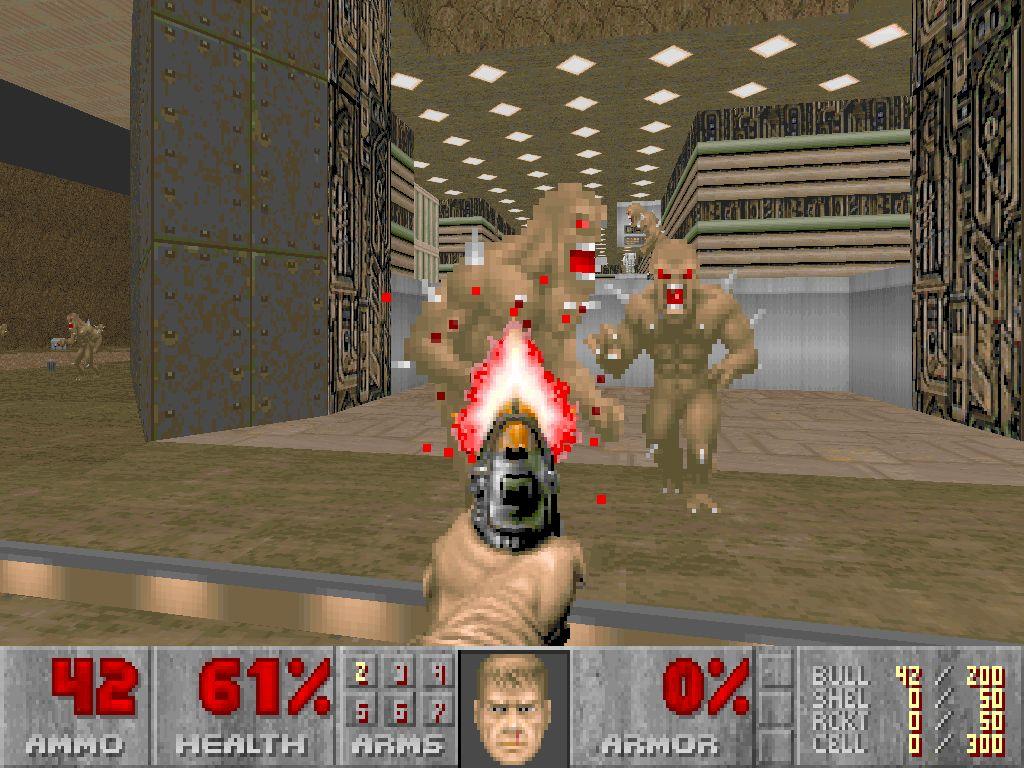Kids ages 3+.
This game was revolutionary. Even by today's standards, the game was tough. However, there was a sense of... awesomeness? You could enter a room and see forty enemies, all in a group, and open fire. Wiping out a horde of demons brought a smile to my young face.
I never thought about the AI until much later. A single computer had to manage all forty of those demons at once.
Their simple sprites and 2-d shape made them easy to render, so the real challenge was managing their behavior. At this level of AI the enemies weren't really intelligent, but they did react to you. If you were near they'd shoot at you. That was hard enough, but they also moved around. Granted, it was predictable, but it was fun.
That's something else we can learn about AI in games: the point is to add something to the game. Typically this is fun, but it can also be a uniqueness to certain enemies, like a speciality in movement.
What is the point in AI if it adds nothing to the game? Dynasty Warriors perfectly creates the "fun" that Doom had in having hordes of enemies, even if those enemies are mostly stagnant and immobile. If people enjoy it, don't knock it. Just find something you enjoy.


No comments:
Post a Comment